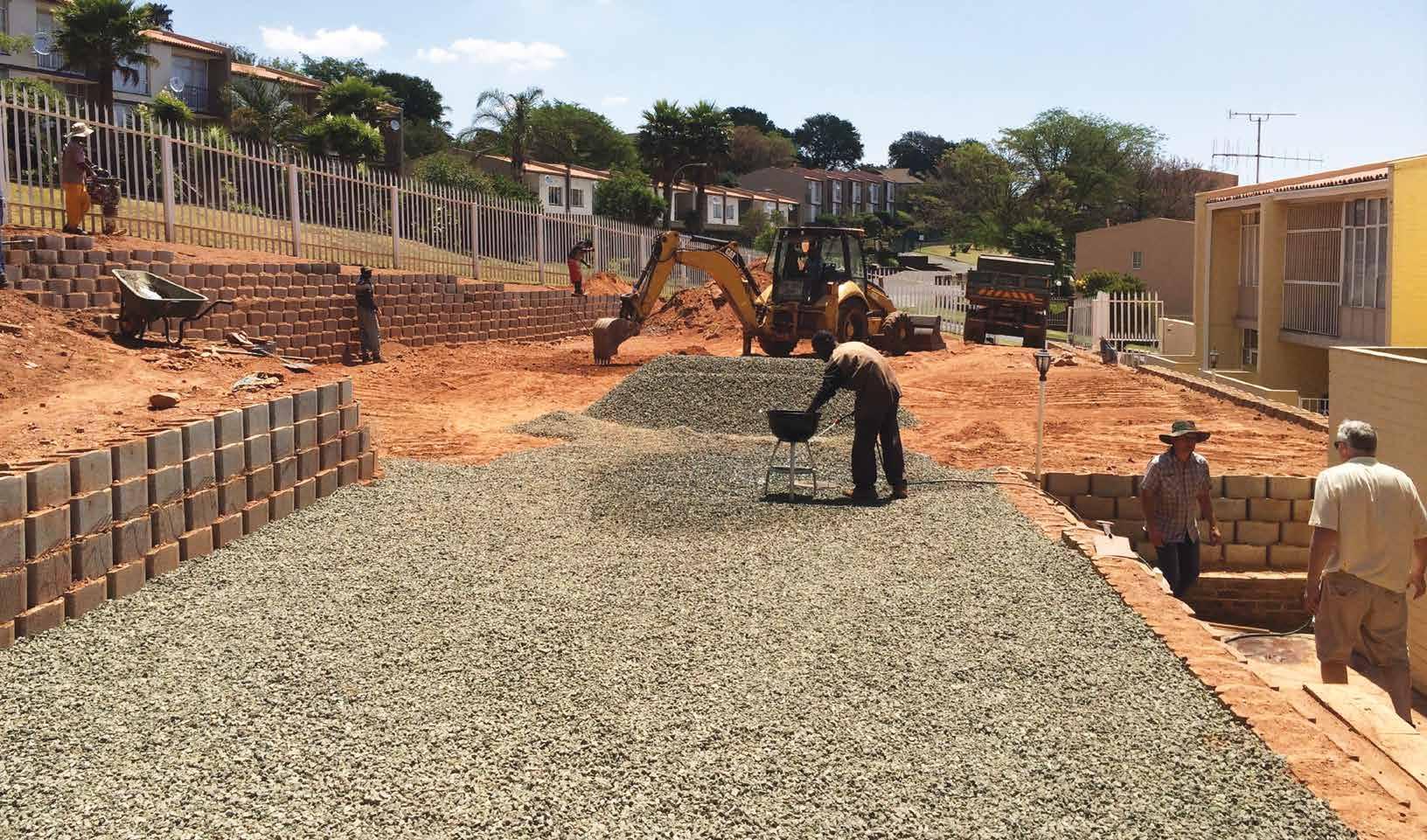3 minute read
Efflorescence
Next Article
White efflorescence
Efflorescence is the formation of salt deposits, usually white, on or near the surface of concrete and clay bricks, causing a change in its appearance. Apart from the discolouration, efflorescence is harmless. This is best described as being “a temporary skin problem and not a deep-seated disease”.
Efflorescence on Bosun Pavers
In Gauteng efflorescence is most obvious in the rainy summer months, but may be observed throughout the year, especially in irrigated areas and after a sudden drop or rise in temperature. It can occur from within the concrete or from the sub-grade (soil below the pavers). Over time, efflorescence becomes less extensive and in most instances, it disappears completely. Lightcoloured pavers might show the deposit less than darker-coloured ones.
How efflorescence occurs
Efflorescence is a natural phenomenon that occurs through one or a combination of the following processes:
Chemical processes
Formation of efflorescence can be the result of a reaction of concrete constituents with carbon dioxide and/or sulphurous gases.
Physical processes
The formation of efflorescence could be caused by a number of physical processes involving both salt and water transfer in and out of the concrete product, the aggregates used in installation and the sub-grade or earth beneath the pavers.
Removal of white efflorescence
• Efflorescence is very difficult, but not impossible to remove. • Irrespective of the method used to clean efflorescence, it could reappear (in some instances, more severely than before). • In many instances, rain simply washes away white efflorescence. • Others recommend dry brushing and the avoidance of water to clean effloresced pavers. • Some recommend washing with clean water or a mild detergent. • A proven, but risky method of cleaning efflorescence involves the application of a mild acid solution to the pavers (one part pool acid to 12 parts water). Thorough pre-soaking and post-washing with clean water are required when using this method. Pre-soaking reduces natural porous tendencies, limiting the depth of penetration of the cleaning solution.
Post-washing is required to remove any residue of the acid.
Bosun’s take on efflorescence
• Efflorescence is a natural phenomenon appearing randomly in most materials used for segmented paving. As mentioned earlier, it could even be caused by the earth on which the paving is laid. Bosun Brick and other companies are actively working to find a remedy for efflorescence. • Many paving installations have never been affected by efflorescence. Some have had efflorescence for a few weeks, while others have been affected for months. Sometimes efflorescence is recurring and in other cases, it happens only once. • Bosun Brick cannot guarantee efflorescence-free products (prior to- or post-installation).
Bosun Brick’s comprehensive five-year guarantee therefore does not cover efflorescence. Remember, white efflorescence is usually a temporary problem.
Black efflorescence (Desert varnish or black attack)
Black efflorescence is the unpredictable, sporadic darkening of concrete, clay and natural stone. Sporadic darkening usually occurs within six months of installation and is extremely difficult to remove. This phenomenon occurs on pavers, bridges and buildings.
Although various studies have been conducted on black efflorescence, the exact cause is still unclear. However, studies have found a correlation between black efflorescence and the moisture of the surrounding area in which it has been installed. The short-term solution is to replace the affected pavers and ensure adequate drainage of the sub-base during installation.
Over time and as the pavers wear off, discolouration will occur, thus blending in with other discoloured pavers.
Other forms of discolouration mistaken for black efflorescence include mould, algae, tyre rubbers and staining from bedding sand.
White efflorescence
Black efflorescence The same site 6 months later



Reality check
The formation of efflorescence on a site (black or white) is linked to the earth’s water content beneath the paving. In areas where high water tables exist or where moist clay soils are prevalent, efflorescence is a common occurrence. Black efflorescence is usually common to specific geographical areas. A neighbour’s paving and adjacent concrete structures would give you an indication of the potential of your paving being affected by efflorescence.

